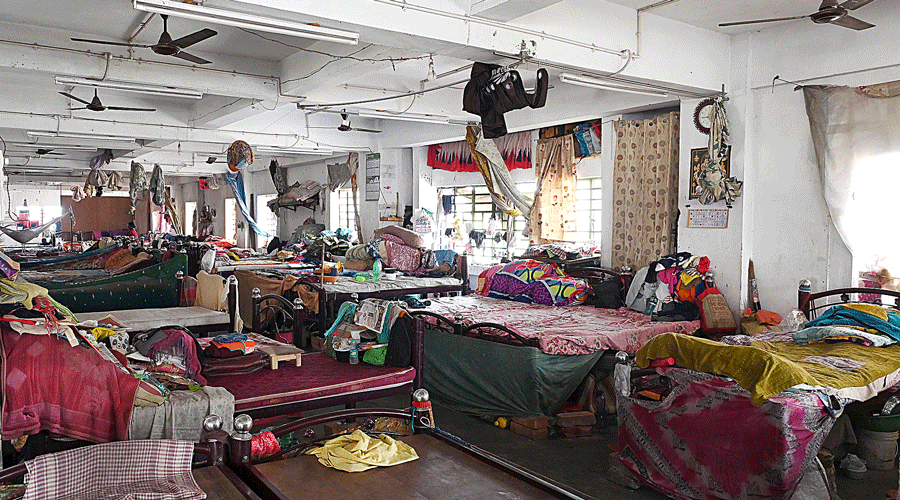Kolkata has over 7,000 homeless people, according to a survey conducted by the Kolkata Municipal Corporation (KMC) in 2018, but there are only 650 beds in shelters for the urban homeless in the city.
Census 2011 reported a greater number of homeless people — about 30,000 — in the city.
But both the surveys pointed out that there were far more people living on the pavements and under flyovers than there was space in the available shelters to accommodate them.
Mayor Firhad Hakim recently said all homeless people in Kolkata would be sent to the shelters and they would not be allowed to live on pavements.
But even if the mayor wanted so, the KMC would not be able to provide space to all. The KMC runs six shelters for the homeless while the state government runs three in Kolkata.
An official of the civic body said the nine shelters together can accommodate 650 people.
“We have also built two more shelters where another 200 people can be shifted. The police and the NGOs that have won the rights to run these centres will conduct night surveys and identify people who can be shifted to the newly built shelters,” said the KMC official.
Another six shelters are in the pipeline and they together can provide space for 1,000 more.
The largest of the running shelters is the one in Kalighat, located to the west of the Kalighat temple.
A visit to the area showed that it was filled with people. The lane leading to the shelter also had multiple shanties where many more homeless people live as they could not find space inside the shelter.
Those living inside told The Telegraph that they used to live in and around the Rashbehari crossing for years till they were shifted to the Kalighat shelter around February 2020.
The residents of the shelter said they earned their living by working as domestic help, ragpickers, washing cars or cleaning the homes of local people. Some of the younger men work as delivery agents of food delivery apps but cannot work late into the night as the gates close early.
There are beds placed one beside another, without any partition, like in a dormitory.
A woman said they were happy to find space in the shelter but the complete absence of privacy was something that bothered them.
Mayor Hakim said last month that ragpickers were making the pavements unclean and were also a risk to the city’s law and order.
“If some unidentified people live in the city, it could lead to law-and-order problems. Besides, they are also making the city ugly by stacking bottles and other items on footpaths. They cannot keep these things on footpaths.”
“The police have to find out who these people are. The police should check their Aadhaar cards and Voter cards, and verify whether they are citizens of India. After identifying them, the police should shift these people to the shelters for the urban homeless,” Hakim added.
Conversations with multiple KMC officials revealed that the last Census, conducted in 2011, reported there were about 30,000 homeless people in the city.
The KMC disputed this figure. The KMC then conducted a survey through a third party under orders of the Supreme Court. This survey, done in 2018, found that there were about 7,200 homeless people in Kolkata.
The number is likely to have gone up since, especially after the Covid pandemic.
